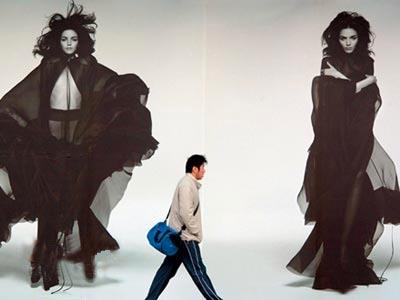China has become one of the world’s largest markets for luxury goods. The question is, why?
Philanthropic organizations in China have never been quite as well-accepted as their Western counterparts, owing in part to their relatively new status in Chinese society and in part to popular mistrust on the part of the Chinese population, which generally suspects that its money may not be going to the most altruistic of uses. It is thus unsurprising that Guo Meiling, a 20 year-old Chinese blogger famous for flaunting her lavish lifestyle over her Sina.com microblog, was met with fierce criticism from web users across China when she claimed to be a "commercial senior manager" at the Chinese Red Cross Society.
Ms. Guo, who claimed to own a white Maserati and yellow Lamborghini, as well as a villa outside of Beijing, posted pictures of herself flaunting an assortment of clothing, electronics, and accessories from Gucci, Prada, Louis Vuitton, and other top-tier luxury brands.
However, despite the sea of criticism Ms. Guo has received for flaunting her various brand-name accoutrements, she is by no means the only person in China interested in such goods. Much to the contrary, China is rapidly becoming one of the world’s largest markets for luxury products, with outlets for such high-class brands as Coach, Louis Vuitton, and Hermes opening in cities across China – and frequently selling out within hours of opening.
Moreover, this thirst for luxury goods is not merely limited to the Chinese mainland. Many overseas Chinese have also become significant consumers of luxury goods in their home countries. As one Chinese student studying abroad in the United States notes, the demand for luxury goods within China "really pales in comparison" to the demand for such goods outside China. "Almost every day in almost every LV outlet, [you can find] large groups of Chinese customers. Because the flagship outlets of many foreign luxury goods chains have passport rules limiting purchases to one per customer, [Chinese] customers will find local Chinese immigrants to buy luxury goods in their place."
All this demand is rapidly transforming China into one of the world's largest markets for luxury goods. In March of this year a report by the World Luxury Association found that the Chinese mainland market had surpassed Japan as the world's second largest consumer of luxury goods, with total FY 2010 consumption reaching 10.7 billion USD. Interestingly, it also reported that Chinese individuals traveling abroad had purchased an eye-popping $50 billion USD of luxury goods from the European market, making them by far the world's largest purchase group of luxury goods. All told, the consumption rate for luxury goods in China has reached a tremendous 20% (by comparison, the same figure for most developed Western nations is a paltry 4%).


















